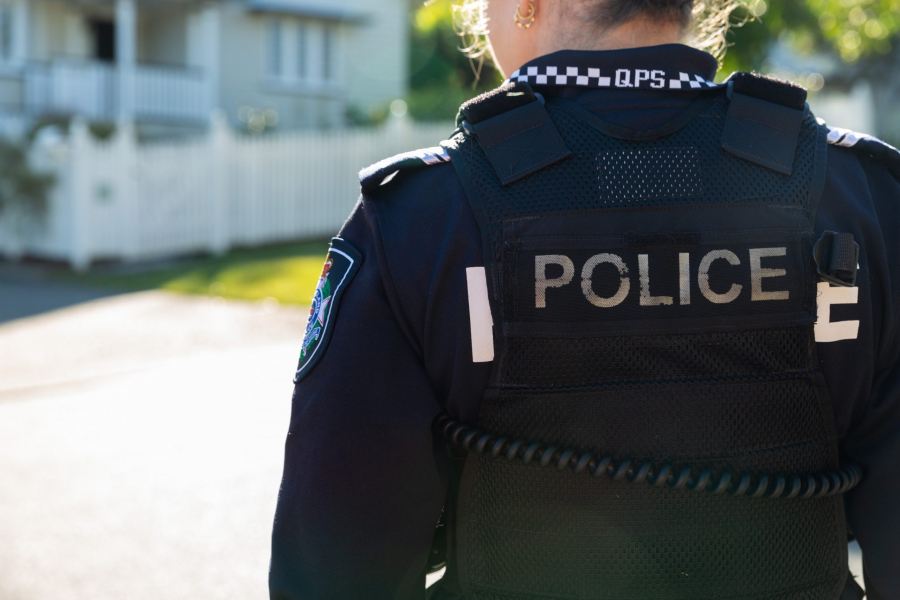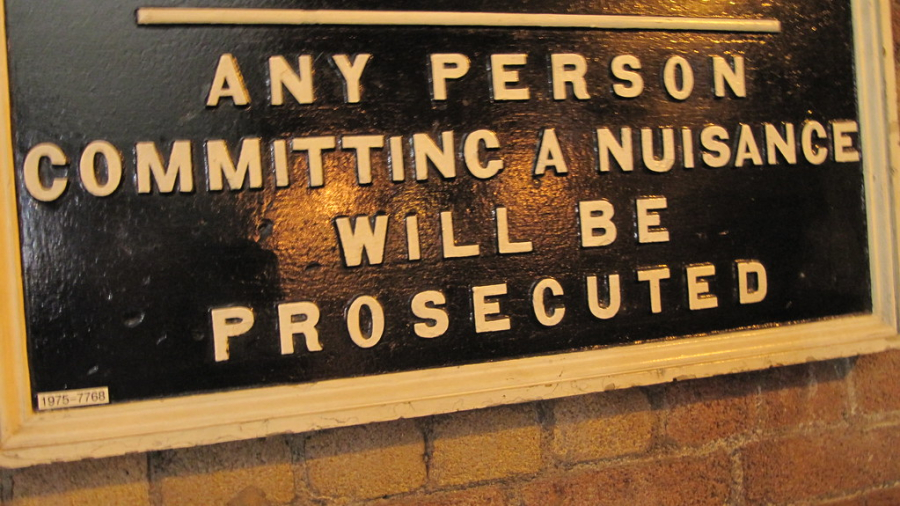Clarity Law
Introduction
Queensland law creates numerous charges that are similar to, or related to, stealing. Fraud, forgery, computer hacking, and receiving tainted property are all examples of offences that are similar to stealing but do not require your actions to fall within the very strict definition of stealing. Another example of these kinds of offences is unlawful use or possession of a motor vehicle, aircraft, or vessel. This offence is created by section 408A of the Criminal Code 1899 (Qld). This section states:
A person who –
- (a) unlawfully uses any motor vehicle, aircraft or vessel without the consent of the person in lawful possession thereof; or
- (b) has in the person’s possession any motor vehicle, aircraft or vessel without the consent of the person in lawful possession thereof with intent to deprive the owner or person in lawful possession thereof of the use and possession thereof either temporarily or permanently;
is guilty of a crime and liable to imprisonment for 7 years.
This article provides an overview of this offence and gives some examples of the various circumstances which may cause you to be charged with this offence. For simplicity’s sake, this article assumes that the thing unlawfully used or possessed is a car; however, keep in mind that everything said applies equally to any other type of motor vehicle, aircraft or vessels (ie, boats, etc).
Consent, Use, and Possession
The first thing to notice about this offence is that both paragraphs refer to you using and/or possessing a car without “consent”. It is important to understand that this is a question of fact only. It is irrelevant whether you knew that the owner and/or “person in lawful possession” did not give you their consent. On the other hand, if you genuinely (but mistakenly) thought that you did have their consent, then you may be able to raise the defence of mistake of fact. However, you must hold that belief honestly and reasonably.
The “use” to which the first paragraph refers is much broader than driving or operating the car. For this reason, you can be guilty of this offence even if you are merely a passenger and even if someone else took the car. In these circumstances, the elements of the offence are made out: you “used” the car (by riding in it as a passenger) and did so without the consent of the “person in lawful possession”. Again, it is irrelevant whether you knew that the person in lawful possession did not give their consent.
Another example: suppose you borrow someone’s car for a specific purpose, such as listening to the radio or charging your phone with the USB port. Instead, you drive the car. In that case, your “use” of the car will have been without the consent of the person in lawful possession, and you may be guilty of this offence.
The word “possession” has a precise, technical meaning defined by section 1 of the Criminal Code 1899 (Qld). Specifically, this definition includes “having under control in any place whatever”. Thus you do not need to be actually be located inside the car to be guilty of this offence. You need only to have the car under your control. This may include circumstances where you have left the car in another location, such as storage shed, etc.
Furthermore, you may be guilty of this offence even if, at one stage, you were lawfully using or possessing the car. For example, if you rent a car but do not return it by the expiration of the rental period, your continued possession of the car becomes unlawful. Alternatively, suppose you are provided with a company car that requires you to return the car to your employer’s business premises at the end of your shift. You may be charged with unlawful use or possession of the company car if you drive it home instead.
Who is the “Person in Lawful Possession”?
Both paragraphs of section 408A refer to the “person in lawful possession”. The second paragraph also refers to the “true owner”, suggesting that these phrases are not referring to the same thing. Indeed, they are not. As already discussed, “possession” connotes having under control. Thus the person in lawful possession is the person who has a lawful right to immediate, physical possession of the car. This is not necessarily the same as the owner. For example, the lessee of a rental agreement is the person in lawful possession, even though the car remains the property of the rental company. Alternatively, the adult or adolescent child whose parent bought them a car is the person in lawful possession, even though the parent may be the registered owner of the car.
Aggravating Circumstances
In addition to the above, section 408A spells out certain circumstances which, if they apply to you, means that you will be liable to a harsher penalty. Specifically, if you use a car (or even intend to) to commit another, serious, criminal offence, the maximum penalty increases from 7 years’ imprisonment to 10 years’ imprisonment.
Similarly, if you unlawfully use or possess a car, then destroy, damage, remove, or otherwise interfere with any part of the car’s mechanics or equipment (or even intend to), then the maximum penalty increases to 12 years’ imprisonment.
Which Court will Deal with the Charge?
Generally, this offence is dealt with in the Magistrates Court of Queensland. In these cases, the Magistrates Court cannot sentence you to a penalty more than 3 years’ imprisonment. If the Magistrates Court forms the view that you ought to serve more than 3 years’ imprisonment, then it must send your matter to the District Court.
Furthermore, if the value of the car in question is worth more than $30,000 and you plead not guilty, then the charge is determined by a trial in front of a jury in the District Court. Similarly, if you are charged with the aggravating circumstance of destroying, etc the mechanism or equipment of the car, and the damage alleged is more than $30,000 and you plead not guilty, then you will be likewise tried in front of a jury in the District Court.
Conclusion
As you can see, the charge of use or possession of a motor vehicle, aircraft, or vessel is much broader than a charge of stealing. Consequently, the circumstances in which you may find yourself guilty of this offence are likewise broad. Because of this complexity, it is important to get expert legal advice, should you find yourself charged with this offence.
How do I get more information or engage Clarity Law to act for me?
If you want to engage us or just need further obligation free information or advice then you can either;
- Use our contact form and we will contact you by email or phone at a time that suits you
- Call us on 1300 952 255 seven days a week, 7am to 7pm
- Book a time for us to call you
- Email This email address is being protected from spambots. You need JavaScript enabled to view it.
There are various offences of assaults, which are created by section 340 of the Criminal Code. This article concentrates on serious assaults under Queensland Law. To make an assault ‘serious’, a person must commit an ‘assault’ within one of nine categories.
What is ‘Assault’?
Many people think assault is a straightforward matter. Either you have struck someone or you have not. However, the criminal definition of assault is more complicated.
‘Assault’ is defined in the Criminal Code to mean: ‘A person who strikes, touches, or moves, or otherwise applied force of any kind to, the person of another, either directly or indirectly, without the other person’s consent, or with the other person’s consent if the consent is obtained by fraud, or who by any bodily act or gesture attempts or threatens to apply force of any kind to the person of another without the other person’s consent, under such circumstances that the person making the attempt or threat has actually or apparently a present ability to effect the person’s purpose, is said to assault that other person.’
In other words, an assault can be committed by a minimal use of force, or no use of force at all, if a threat to do so is made with the apparent ability to carry out the threat.
Is it complicated enough yet? It is about to be.
What is ‘Serious’?
There are nine categories of serious assaults, which can have different maximum penalties depending on further categories.
To make an assault ‘serious’ a person must commit an assault in the circumstances below:
- The assault is with intent to commit a crime, or with intent to resist or prevent arrest or detention of himself or herself or any other person.
- The person assaults, resists, or obstructs a police officer who is doing their job, or anyone who is helping a police officer who is doing their job.
- The person assaults anyone who is performing a duty imposed on them by law.
- The assault is because someone has performed a duty imposed on them by law.
- The assault occurs while pursuing a conspiracy concerning any manufacture, trade, business, or occupation, or respecting any person concerned with any manufacture, trade, business, or occupation, or the wages of any such person.
- Assaults someone who is 60 years old or more.
- Assaults someone who uses a wheelchair, assistance dog or remedial device.
- A prisoner assaults a prison officer.
- Assaults, or resists or wilfully obstructs, a public officerwhile the officer is performing a function of the officer’s office or assaults a public officer because the officer has performed a function of the officer’s office. A ‘public officer’ is someone who is a health service employee, or authorised officer under the child protection Act, or a public transport transit officer.
The person must have committed an ‘assault’ in all categories except categories 2 and 9, which may be only resisting or obstructing a police or public officer.
Maximum Punishment
For categories 1 to 9, the punishment is a maximum of 7 years.
However, for categories 2, 8 and 9, if a police, prison or public officer is assaulted in circumstances where:
- the offender bites or spits on the officer or throws at, or smears on, the officer a body fluid or faeces,
- the offender causes bodily harm (bodily harm means causing greater injury than pain alone),
- the offender is or pretends to be armed with a weapon.
The punishment is 14 years maximum.
A public officer is someone who is a health service employee, and authorised officer under the child protection Act, or a public transport transit officer.
Possible Defences
- Identification—as with any case, if it was not you who committed the offence, then you cannot be guilty of it.
- Self defence—if you were defending yourself, or someone else, then even if you did commit an assault, it may be lawful. Note, assaulting an officer in the lawful execution of his or her duty will exclude self defence as an option.
- Provocation—if you are provoked (see provocation explained in greater detail here)
- Accident—although a difficult defence to run, if it can be shown the assault was genuinely an accident, and not foreseeable as a possible consequence of your actions, it can be a defence.
For greater detail concerning these defences, speak to one of our experience lawyers or visit our article on defences to an assault charge.
What Court Will to be Heard In?
A serious assault, by default, will be heard in the District Court. The prosecution, however, has the power to decide whether a serious assault should be heard in the Magistrates Court instead. In the writer’s experience, the prosecution does usually decide to have these matters heard in the Magistrates Court unless it is an exceptionally violent serious assault.
Likely Punishments
The Supreme Court has made plain that offenders who are guilty of serious assaults in the more serious circumstances—where the punishment is 14 years max—should generally be sentenced to imprisonment. This does not always mean imprisonment in actual gaol, as a suspended term of imprisonment may also be an option.
The sentencing principle of ‘general deterrence’ is an important consideration. General deterrence is the idea of sentencing someone so as to deter others who may be inclined to do the same. In cases such as these, the more severe the assault, the more severe the punishment is likely to be.
Conclusion
Although there are multiple categories of serious assault, in the writer’s experience the most commonly committed are in relation to police officers or people over the age of 60.
Needless to say, if you are charged with a serious assault of any description, you need a lawyer. We at Clarity Law know the judges, the cases and the law. We are to advise on likely punishments or whether there are viable defences or the ability to negotiate with the prosecutor for a lessor charge.
How do I get more information or engage Clarity Law to act for me?
If you want to engage us or just need further obligation free information or advice then you can either;
- Use our contact form and we will contact you by email or phone at a time that suits you
- Call us on 1300 952 255 seven days a week, 7am to 7pm
- Book a time for us to call you
- Email This email address is being protected from spambots. You need JavaScript enabled to view it.
Imprisonment is the harshest sentence available to Queensland courts to punish offenders and to deter others from committing similar offences. Some crimes are so serious that the court will impose imprisonment even for a first offence and regardless of the offender’s otherwise good character. In other cases, the court will only use imprisonment as a last resort, and usually because other types of punishment have not been sufficient to deter the offender from re-offending. Somewhere in the middle are cases that would otherwise require the offender to be imprisoned but, because of the overall circumstances in which the offence was committed, the court thinks that it would be unjust to send them into custody.
Because of this wide variety of cases, the courts have some latitude in deciding how sentences of imprisonment may be structured. In short, the courts have 3 main ways to impose imprisonment: (1) wholly suspended sentences; (2) immediate release onto parole; and (3) actual imprisonment with a requirement to serve time.
The purpose of this article is to explain briefly each of these 3 types of sentences to help you understand the options the court has should you find yourself facing a potential term of imprisonment.
Wholly Suspended Sentences
Sentences that are wholly suspended could be described as nominal sentences of imprisonment, owing to the fact that they do not require you to spend any actual time in custody. Instead, the force of the punishment consists of a threat of being imprisoned at a future time should you commit any further offences.
The court determines how long you are subject to this threat of future imprisonment. It may be for as long as the suspended sentence itself, or for a longer period (up to a maximum of 5 years). Because of this feature, suspended sentences have 2 timeframes: the period of the nominal imprisonment (the “sentence” itself) and the “operational period” of the sentence (how long the sentence hangs over you as a threat of future punishment). Usually, the operational period is proportionate to the length of the sentence.
It is best to understand suspended sentences by way of an example. Suppose you are convicted of a serious offence. The court decides that the appropriate punishment is to imprison you for 12 months. However, the court also decides that it should wholly suspend the imprisonment. It then decides that the operational period of the suspension is 2 years. What does this mean?
In short, it means that you do not serve any actual time in custody. It also means that you are subject to the threat of 12 months’ imprisonment for 2 years, starting from the date of sentence. It also means that, if (during those 2 years) you are convicted of any offence that attracts imprisonment as a possible punishment, the court ought to make you serve the 12 months’ imprisonment in addition to any other punishments you may face for the new offending.
The court acts on the presumption that it should activate the suspended sentence unless it is unjust to do so. In other words, should you commit another offence during the operational period of a suspended sentence, you face an uphill battle convincing the court not to send you to prison.
Imprisonment with Immediate Release onto Parole
Like wholly suspended sentences, imprisonment with immediate release onto parole does not require you to spend any actual time in custody. Similarly, immediate release onto parole comes with the threat of future imprisonment should you be convicted of any further offence while subject to parole.
However, unlike wholly suspended sentences, you spend the period of imprisonment under a form of supervision in the community. This supervision comes in the form of reporting to your nearest Probation and Parole office at a frequency decided by your parole officer. Your parole officer also has the authority to make you undergo regular alcohol and / or drug testing (if appropriate), alcohol and drug intervention courses, counselling, or other meetings. The purpose of these conditions to help you address any underlying issues which may have caused you to offend in the first place. There is a risk that you may continue to commit offences if these issues are not resolved.
Other, standard conditions of parole include:
- Not committing any other offence during the period that you are on parole;
- Updating Probation and Parole of any change of address, or change of employment within 48 hours of the change;
- Receiving home visits from Probation and Parole, as directed;
- Not leaving the State of Queensland without the prior permission of Probation and Parole; and
- Complying with any other lawful direction given to you by Probation and Parole.
Should you breach any of these conditions, Probation and Parole may take action to prevent you from committing any further breaches. Such actions may include adding further conditions to your parole, or issuing a verbal or written warning. However, if the breach is serious enough, Probation and Parole may suspend your parole and issue a warrant for your arrest. In this case, you will be put in custody for up to 28 days. In an extreme case, Probation and Parole may refer you to the Parole Board, who has the power to cancel your parole completely.
Should you be convicted of any further offences, and sentenced to another period of imprisonment (however served), your existing parole is automatically cancelled.
Serving Actual Time
A sentence of imprisonment requiring you to serve a period of time in actual custody is the most serious form of imprisonment in Queensland. The very day that you are sentenced to imprisonment involving actual time, you are taken immediately from the courtroom and into the custody of Correctional Services. You remain in custody until the end of the period of imprisonment set by the court.
You generally do not serve the entire period of imprisonment. Similar to suspended sentences, there are 2 timeframes involved in sentences of imprisonment: the total period for which imprisonment is ordered (often referred to as the “head” sentence) and the amount of time you are required to serve in actual custody.
As a general rule, you only serve approximately one-third of the entire sentence if you plead guilty. If you are found guilty at the end of a trial, you can expect to serve up to one-half of the head sentence. While these are general rules, it is ultimately up to the court to decide how much of the head sentence you must serve in actual custody. Any exceptional features of your case may convince the court to order that you serve less time in actual custody if those features are in your favour. Of course, you may be required to serve more time in custody if those exceptional features are not in your favour.
However, there are some legislated exceptions. For example, if you are convicted of a “serious violent offence”, you must remain in prison for either 80% of the head sentence or 15 years, whichever is the lesser period of time. There are similar rules for those sentenced to “life” imprisonment, those convicted of drug trafficking and who are members of criminal organisations, etc.
Once you have served the required amount of time in prison, the remainder of the sentence may be suspended. If this occurs, the remaining time under the head sentence hangs over you in precisely the same way as a wholly suspended sentence. It is more likely, however, that you will be released onto parole.
How you are released onto parole depends on the length of the head sentence. If you are sentenced to imprisonment for 3 years or less, the court determines the date you will be released onto parole. This means that, when that date arrives, you are automatically released from prison. However, if you receive a sentence of more than 3 years, then the court is permitted to determine only the date you are eligible to apply for parole. This means that this is the earliest date that you may apply to the Parole Board to determine whether you are suitable to be released onto parole. It may take several weeks, or even several months, for the Parole Board to make a decision about your application. You remain in custody until this decision is made. You will also remain in prison if the Parole Board decides to reject your application for parole.
Your parole date or parole eligibility date is automatically cancelled if you are convicted of a another offence and sentenced to a further period of imprisonment.
Once you are released onto parole, you are subject to the usual parole conditions described above, including conditions that you undertake drug and alcohol testing, attend counselling, programmes, or meetings, etc.
You remain on parole until the end of the head sentence.
Recording of Conviction(s)
If you are sentenced to any form of imprisonment (however you are ordered to serve it), the court must formally record conviction(s) for the offence(s). The court has no discretion not to record convictions once it sentences you to prison (even if it ultimately decides that you should not serve any actual time).
This means that these conviction(s) will appear on any police / criminal background checks.
Conclusion
Sentences of imprisonment are not straight-forward punishments. The courts take these types of punishments seriously and do not hand them out lightly. On the other hand, the courts are not hesitant to use their power to imprison once if they consider doing so warranted in the circumstances. To balance these competing considerations, the law has developed a certain level of flexibility (and complexity) within sentences of imprisonment, such that, even though you are sentenced to the harshest punishment under Queensland law, you may not necessarily spend any time at all behind bars.
Because of this, it is crucial that you get expert legal advice if you think that you might be at risk of being sentenced to prison.
Section 6 of the Summary Offences Act 2005 makes out the offence of public nuisance. It is considered a relatively minor charge that can be dealt with by way of an infringement notice or through prosecution in Court. This guide seeks to give you an overview of the offence of public nuisance and the penalties the court may impose. This guide is in relation to Queensland law only.
What is a Public Nuisance?
A person commits a public nuisance offence if they act in a manner that is considered disorderly, offensive, threatening, or violent and their behaviour interferes with, or is likely to interfere with, the peaceful passage or enjoyment of a public place.
Disorderly Behaviour
In order for conduct to be considered disorderly it must be met with the disapproval of the well conducted and reasonable person and annoy or insult such a person in such a way that it is serious enough to warrant the interference of the law.
What is considered disorderly behaviour can vary depending on the time and place of the conduct.
Offensive Behaviour
A person has acted in an offensive way if they have used offensive, obscene, indecent or abusive language. This test is not a question of if a person felt abused or offended but rather if the words used were objectively offensive.
Threatening or Violent Behaviour
In order for behaviour to be considered threatening the language used must include a threat to cause injury that is intended to be taken seriously.
A person has acted violently if they have used actual force against a person or property
Passage or Enjoyment of a Public Place
For the offence of public nuisance to be made out it is not required that the person charged be in a public place but rather that their actions interfere with a member of the public’s passage or enjoyment of a public place.
This means that being on your own property and yelling offensive language at someone on the road is sufficient to make out the charge.
Going to Court
Generally most court matters follow this procedure;
- The court will generally start at 9:00am
- From just after 8:30am there will be a police prosecutor in the court room giving people their QP9 (what is a QP9 see our article here) and asking people if they are pleading guilty, not guilty or seeking an adjournment
- Once the court starts your name will be called at some point
- The court will then ask you if you are pleading guilty, not guilty or seeking an adjournment.
- If you are seeking an adjournment then the court is quite willing to grant an adjournment on the first occasion the matter is heard in court. If you seek further adjournments the court will need to be convinced you have a valid reason.
- If you are pleading guilty then the guilty plea can usually be conducted there and then. The police prosecutor will provide the court with a verbal overview of what occurred and then tender your criminal and traffic history (if you have any). You can then address the court on what occurred and the penalty to be imposed. The types of things that the court might be interested in hearing from you in regards to the penalty included.
- Why the offence occurred
- What you do for living
- How much money you make a week
- Addressing any similar charges you have previously committed
Penalties for Public Nuisance
There are two options available to police officers that believe you have committed the offence of public nuisance. The first option is that they can give you an infringement notice or ticket and the second is that they can issue you with a notice to appear in court.
The maximum penalty for Public Nuisance is 10 penalty units or 6 months imprisonment, however this is increased to 25 penalty units or 6 months imprisonment. At the time of writing this (March 2022) a penalty unity is $137.00.
If the police have issued you an infringement notice or ticket the ticket will be for a different amount based on the type of behaviour and location of the offence.
|
Behaviour |
Location |
Penalty |
|
Abusive, indecent, obscene, or offensive language |
Public place but not within the vicinity of a licensed premise |
1 penalty unit |
|
Abusive, indecent, obscene, or offensive language |
Public place within the vicinity of a licensed premise |
3 penalty units |
|
Disorderly, offensive, threatening, or violent behaviour |
Public place but not within the vicinity of a licensed premise |
3 penalty units |
|
Disorderly, offensive, threatening, or violent behaviour |
Public place but not within the vicinity of a licensed premise |
6 penalty units |
If you commit a serious offence (or a series of related offences) in Queensland, your lawyer and / or the court may discuss the possibility of you serving probation.
The purpose of this guide is to provide you with a brief overview of probation orders, how they work, and their general purpose.
What is a Probation Order?
Probation and community-service orders are considered “intermediate” orders. As such, they are more serious sentences than fines or good-behaviour recognisances, but not as severe as imprisonment or intensive correction orders.
When you are released on a probation order, you are put under the supervision of a Corrective Services Officer for the duration of the order. It is for the court to decide how long the order will last. However, the Queensland’s sentencing legislation dictates that the court can only make a probation order of between 6 months and 3 years.
The court can only impose probation with your consent.
The purpose of probation is to give you assistance addressing any underlying issues that may be causing you to commit offences; for example, addiction, past trauma, mental health issues, financial distress, etc. Your Corrective Services Officer can help connect you to services that may be able to help you address these issues. Attendance at these services can be made conditions of your probation, so that you risk being further charged with breaching your probation if you stop engaging.
Will a Conviction be Recorded?
Queensland’s sentencing legislation does not require the court to record a conviction when imposing probation. In other words, it is entirely a matter for the court to decide whether to record a conviction.
The usual factors that the court must consider when deciding whether to record a conviction apply.
What are the General Requirements of a Probation Order?
The court is obliged to release you on probation subject to the following mandatory conditions:
- you must not commit another offence during the period of the order;
- you must report to the Probation and Parole office to which the court directs you (usually the office closest to where you live) within the timeframe decided by the court (usually within 24 to 48 hours after the order is made);
- you must report to, and receive visits from, your probation officer, as directed by that officer;
- you must take part in counselling or attend other programmes as directed by either the court or your probation officer;
- you must notify your probation officer of any changes to your residential address or changes to your employment within 2 business days;
- you must not leave Queensland without the permission of your probation officer; and
- you must comply with every reasonable direction of your probation officer.
Failure to comply with any of these conditions could result in you being charged with breaching your probation. The possible consequences of breaching probation are discussed below.
What Other Conditions May be Imposed?
In addition to the above, mandatory conditions, the court may also impose other, more specific conditions that are designed to help you avoid committing further offences or avoid antisocial behaviour. These conditions may include that you submit to medical, psychiatric, or psychological treatment. They may also include requirements that you are routinely tested for alcohol or drugs and that these tests must be negative. Whether the court considers it necessary to impose these extra conditions will depend on the circumstances of your particular case.
Failing to comply with these additional conditions of your probation may also result in you being charged with breaching your probation.
What Happens if You Breach the Probation Order?
If you are convicted of breaching probation, a number of consequences may follow. Firstly, the court may impose a fine of up to $1,334.00 and / or record a conviction for the breach. Secondly, the court may revoke the probation order. Thirdly, should the court revoke your probation, it must then re-sentence you for the original offence for which you were given probation in the first place. This means that you then risk receiving a harsher penalty and / or having a conviction recorded for that original offence.
Prosecutions for breaching probation are handled by Queensland Corrective Services, and not by the police. However, if the breach consists of committing another offence, you may find yourself being prosecuted by both the police (for the new offence) and Corrective Services (for the breach of probation).
Lern more with our article on what happens if you breach a probation order.
Conclusion
Probation orders are designed as a form of punishment while providing you with other types of support which may help with your rehabilitation. In other words, probation is designed to help you receive treatment for any underlying conditions which may be contributing to your offending while imposing a milder form of punishment than imprisonment.
If you have been charged with a serious offence and think that probation would benefit you, it is important to get expert legal advice.
How do I get more information or engage you to act for me?
If you want to engage us or just need further information or advice then you can either;
- Use our contact form and we will contact you by email or phone at a time that suits you
- Call us on 1300 952 255 seven days a week, 7am to 7pm
- Click here to select a time for us to call you back
- Email This email address is being protected from spambots. You need JavaScript enabled to view it.
We are a no pressure law firm, we are happy to provide information to assist you, if you want to engage us then great, if not then you atleast have more information about your charge. You wont be chased or hounded to engage us. Remember its critical you get advice before going to court.
Every person charged with a criminal offence has to, at some stage, make a difficult decision; to plead guilty or not guilty?
This guide proposes to concentrate of some of the things a defendant should consider when they are deciding whether to plead guilty or not guilty to a criminal charge. Traffic offences will not be included.
Pleading guilty to a criminal offence can have serious consequences for a defendant. So how to make the difficult decision?
Case Conferencing Assault Charges in Queensland
Written by Steven BroughIn Queensland, if you are charged with an assault charge, it is quite common for your lawyer to try and negotiate that charge with the Police Prosecution Unit or the Department of Public Prosecutions (“DPP”) to try and get a better outcome for you. This process is known as case conferencing. The case conferencing process is designed to try and streamline the facts the Court will get, or in some cases for the Prosecutor to decide whether or not the charge should proceed at all or at least in its current form. Because we have carried out so many assault charges, we are often asked what type of case conferencing can occur and this article is designed to try and summarize some of the case conferencing successes that we have had with assault charges.












